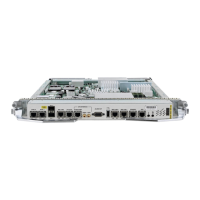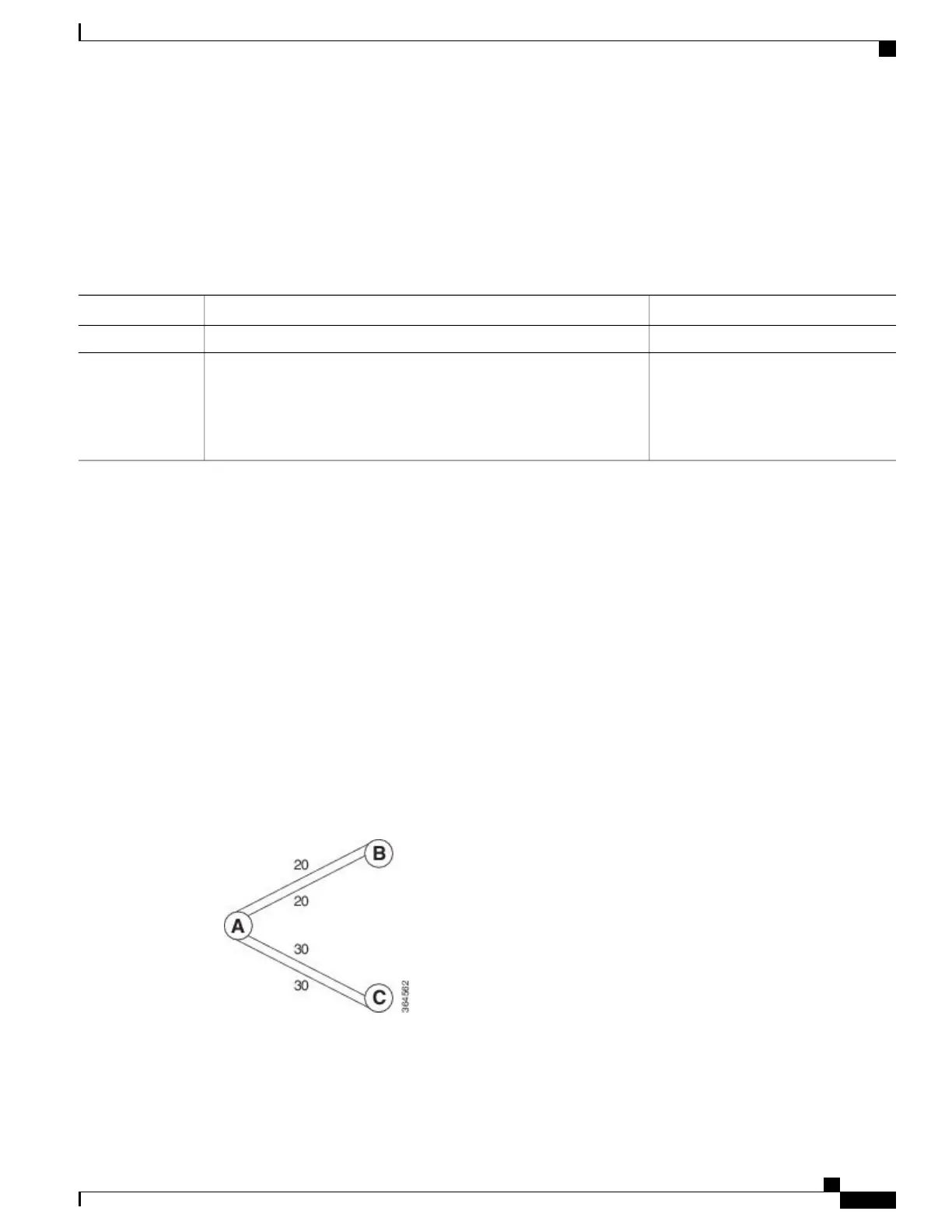SUMMARY STEPS
1.
configure
2.
mpls traffic-eng path-selection ignore overload
DETAILED STEPS
PurposeCommand or Action
configure
Step 1
Activates IS-IS overload bit avoidance.mpls traffic-eng path-selection ignore overload
Example:
RP/0/RSP0/CPU0:router(config)# mpls traffic-eng
path-selection ignore overload
Step 2
ISIS Link Group
The ISIS Link-Group feature allows you to define a group or set of links, and raise or lower their ISIS metric
according to a predefined number of active links.
When the total number of active links (in terms of ISIS adjacency) in a group falls below the configured
number or members, a predefined offset is applied on the remaining active links. When the total number of
active links in a group is reverted, ISIS restores the configured metric by removing the offset.
In the example below, Router A has to exit through router B and C. In between A and B there are two layer
3 links with the same ISIS metric (20). There is a similar setup between A and C (30). In normal operations,
the traffic from A goes through B. If the ISIS Link-Group is not configured, even when the link between A
and B fails, traffic is still routed through B. However, with ISIS Link-Group, you can set an offset of 20 with
minimum-members of 2. Thus, if a link between A and B fails, the metric is raised to 40 (configured (20) +
offset (20)), and so the traffic is routed to C. Further, you can define another ISIS Link-Group, this time
between A and C. If a link between B and C fails, you can raise the offset to 20, and thus traffic is routed back
to B.
Cisco ASR 9000 Series Aggregation Services Router Routing Configuration Guide, Release 5.1.x
OL-30423-03 321
Implementing IS-IS
ISIS Link Group

